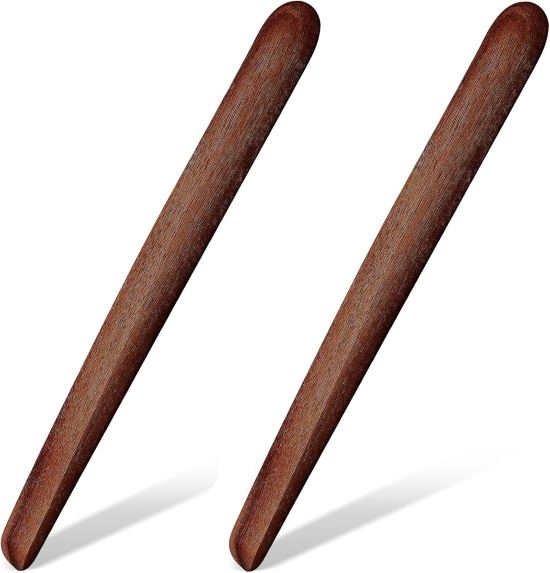Cutlery etiquette is important because it reflects good manners, respect for others, and cultural awareness in dining settings. Proper use of utensils helps create a pleasant and orderly meal experience, whether at a formal event, a business dinner, or a casual gathering. It signals attentiveness and consideration, showing that you value the effort put into the meal and the company you are dining with. Additionally, understanding cutlery etiquette can help avoid awkward situations, especially in international settings where dining customs may vary. Practicing good table manners not only enhances social interactions but also leaves a positive impression on those around you.
Why I Want a Spurtle
A spurtle is a traditional Scottish kitchen utensil (it is not a Pokémon!), typically made of wood, designed for stirring, mixing, and serving food. Unlike a standard spoon, a spurtle has a cylindrical or slightly tapered shape, which helps prevent lumps from forming when stirring porridge, soups, or sauces. Its origins date back to the 15th century in Scotland, where it was primarily used for making porridge, ensuring a smooth and even consistency. Modern spurtles come in various designs, including flat, slotted, or contoured versions, making them versatile tools for many cooking tasks.
In the kitchen, a spurtle is useful for stirring thick mixtures like oatmeal, risotto, or stews because its unique shape allows for better movement through the pot without excessive sticking. It is also great for folding ingredients gently into batters, spreading toppings, or even scraping the sides of bowls and pans without damaging nonstick surfaces. Some chefs prefer using a spurtle over a spoon because it reduces surface tension, helping to keep mixtures light and airy. Additionally, wooden spurtles are naturally antimicrobial and don’t transfer heat like metal utensils, making them safer for handling hot dishes.
I want a spurtle for myself because it combines tradition, functionality, and aesthetics in a way that enhances cooking. Its ergonomic design would make stirring more efficient while also being gentle on my cookware. I love the idea of using a tool with historical roots that still holds up in modern kitchens. Plus, a well-crafted wooden spurtle would add a rustic charm to my kitchen while being an eco-friendly alternative to plastic utensils. Whether I’m making porridge, soups, or baking, a spurtle would be a practical and enjoyable addition to my cooking routine.
Balvi Sardine Fork – It’s Good For You!
Sardines are an excellent source of essential nutrients, making them a highly beneficial addition to a healthy diet. They are packed with high-quality protein, which supports muscle growth and repair, as well as omega-3 fatty acids that promote heart and brain health while reducing inflammation. Additionally, sardines are rich in calcium and vitamin D, which are crucial for strong bones, and they provide important minerals like iron, magnesium, and potassium. Unlike larger fish, sardines have lower mercury levels, making them a safer seafood option. Their high nutrient density, affordability, and sustainability make sardines a nutritious and eco-friendly choice for overall well-being.
And sometimes you need special cutlery for that special treat. And that’s where these Sardine forks come in. Or swim in? Made of dishwasher safe stainless steel and packed like sardines a box that looks like a real sardine can! It’s a set of six fish sticks per can. A great gift for that sardine fiend in the family!
Foldable Silicone Measuring Spoons
Folding flat cutlery is useful primarily for its space-saving design, making it ideal for travel, camping, and compact kitchen storage. Traditional cutlery can take up a lot of room, but foldable versions collapse into a smaller size, making them easy to pack into backpacks, lunchboxes, or drawers. This feature is especially beneficial for people who enjoy outdoor activities like hiking and camping, as it allows them to carry essential utensils without adding unnecessary bulk. Additionally, for those living in small apartments or tiny homes, foldable cutlery helps maximize kitchen space while maintaining functionality.
Another key advantage of folding flat cutlery is its convenience and portability. Many foldable utensils are designed with durable materials like stainless steel or lightweight titanium, ensuring longevity while being easy to carry. They often include locking mechanisms to keep them sturdy when in use, providing the same reliability as traditional cutlery. This versatility makes them an excellent choice for frequent travelers, professionals who bring their own meals to work, or anyone who prefers a practical and reusable alternative to disposable utensils. By reducing storage needs and enhancing portability, foldable flat cutlery is an efficient and eco-friendly solution for modern living.


